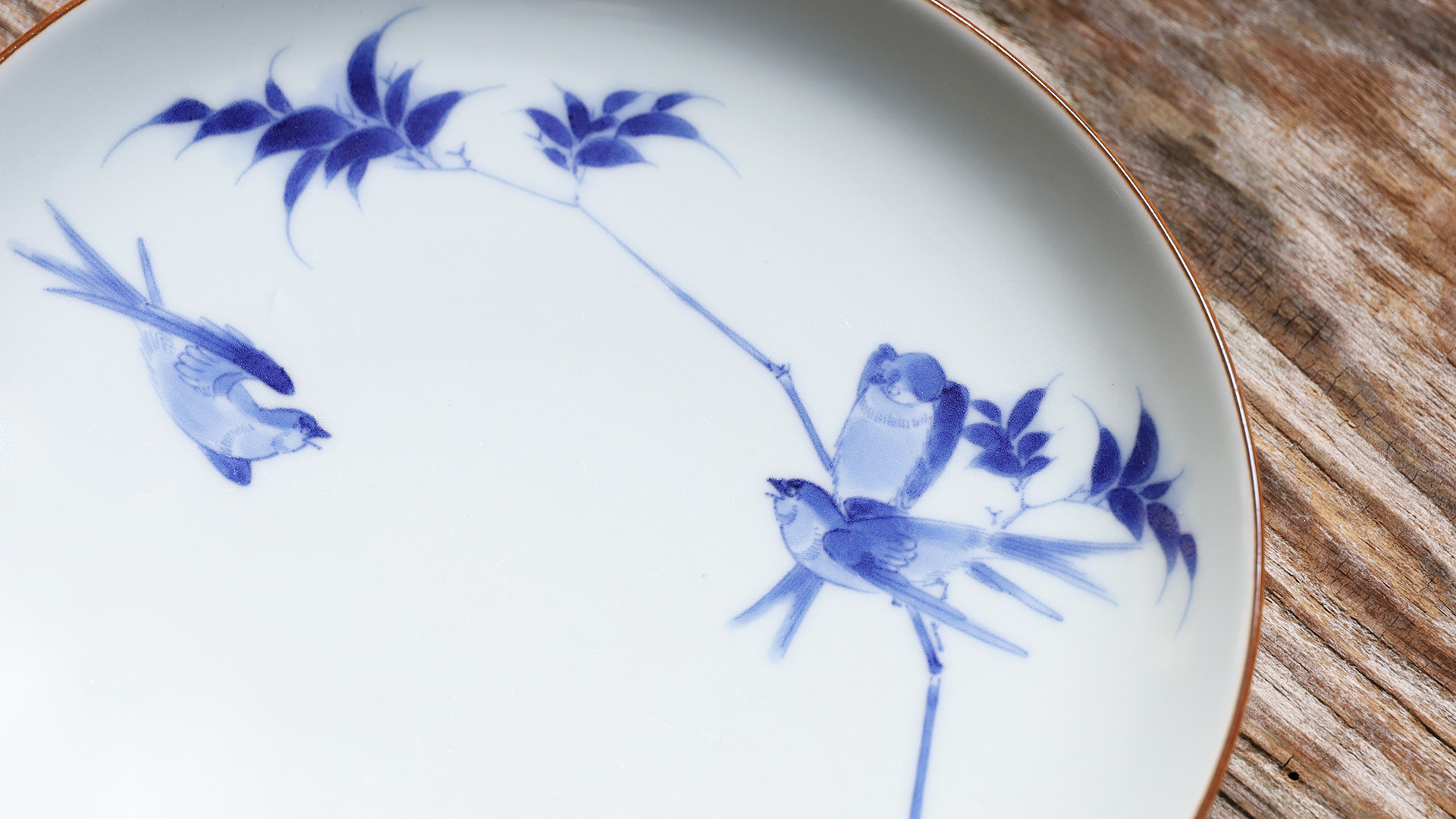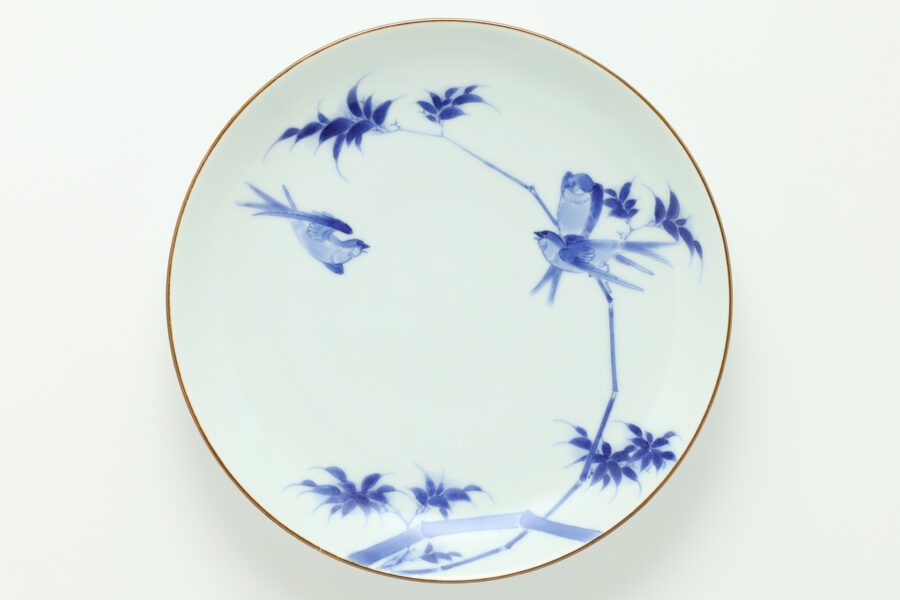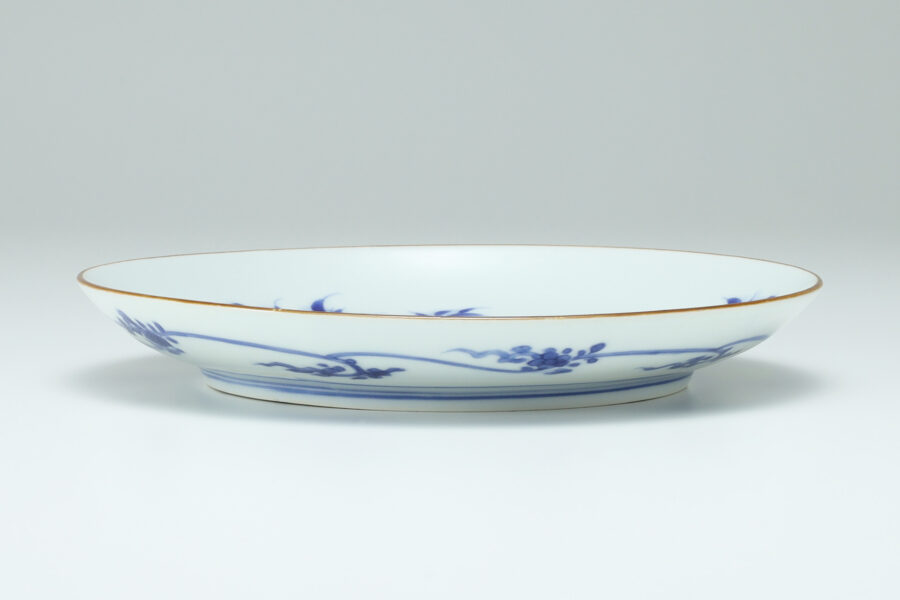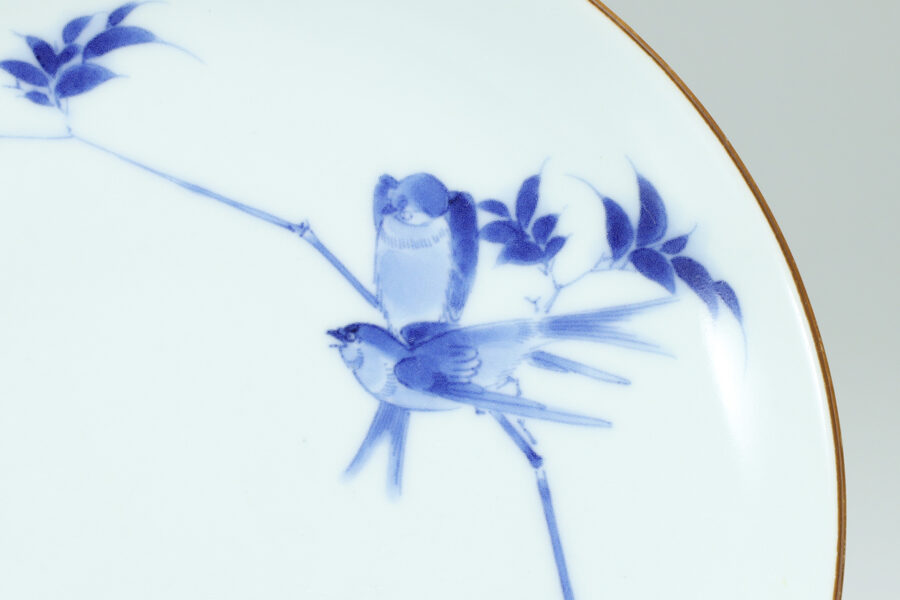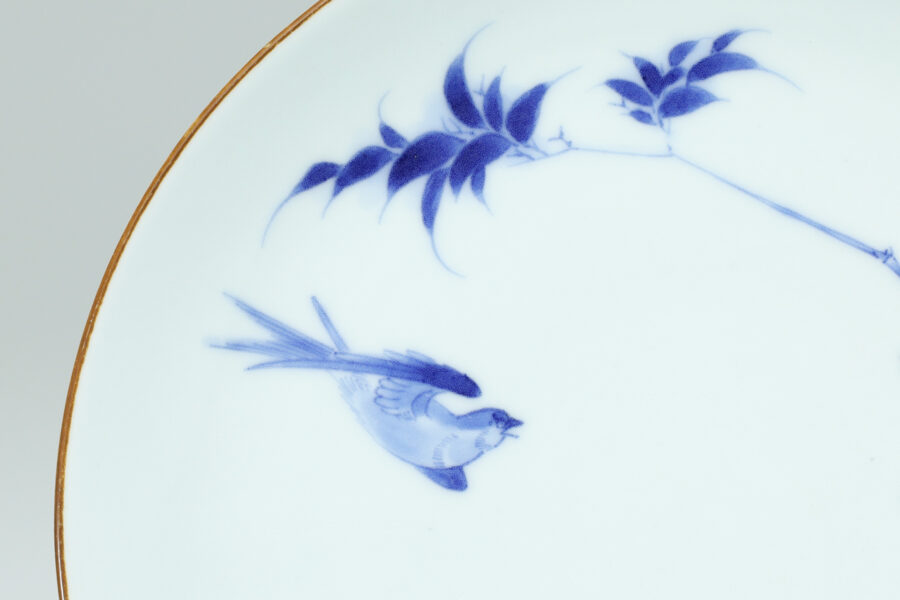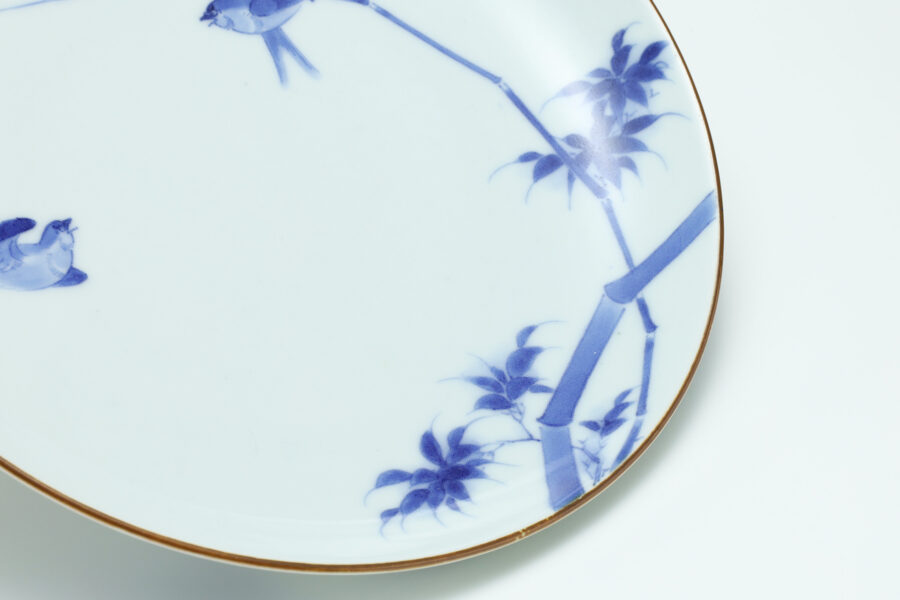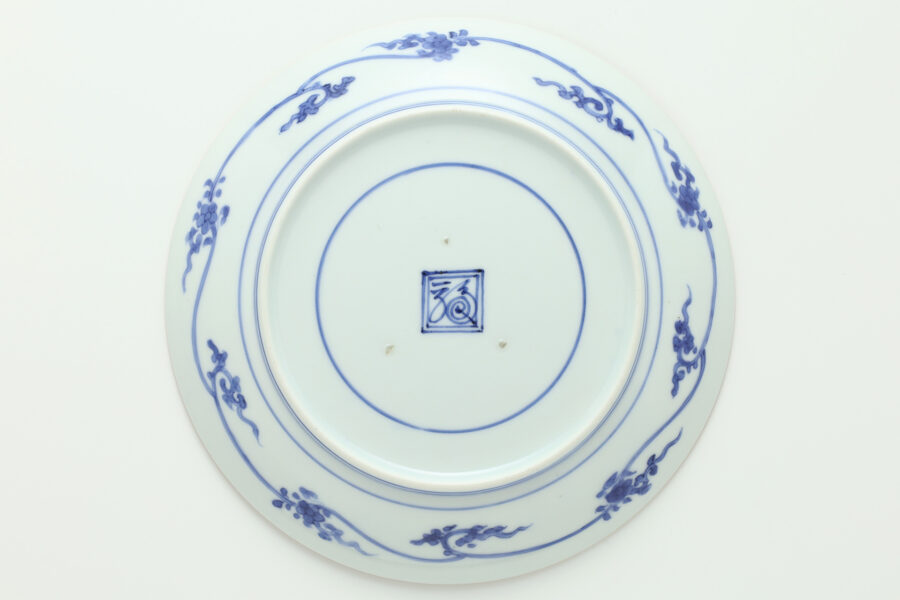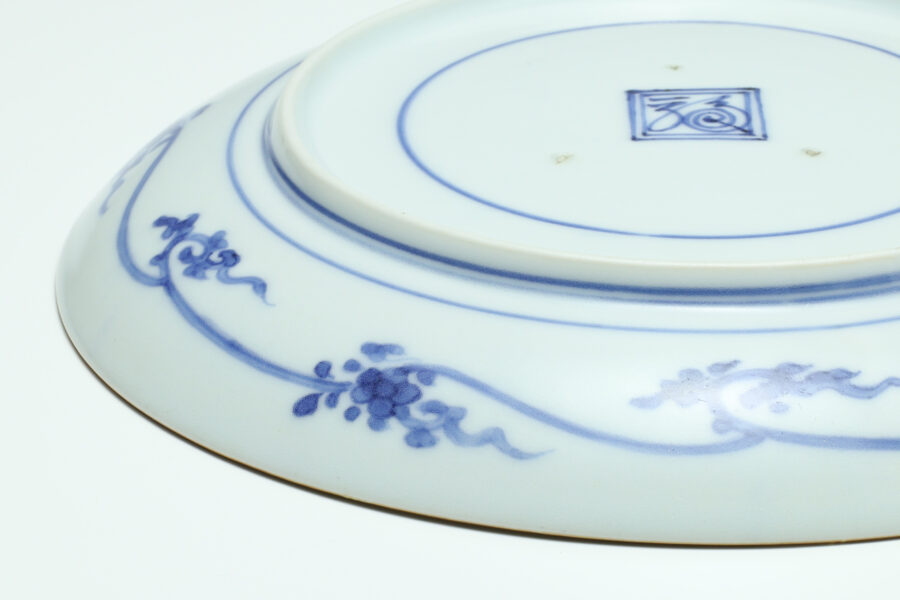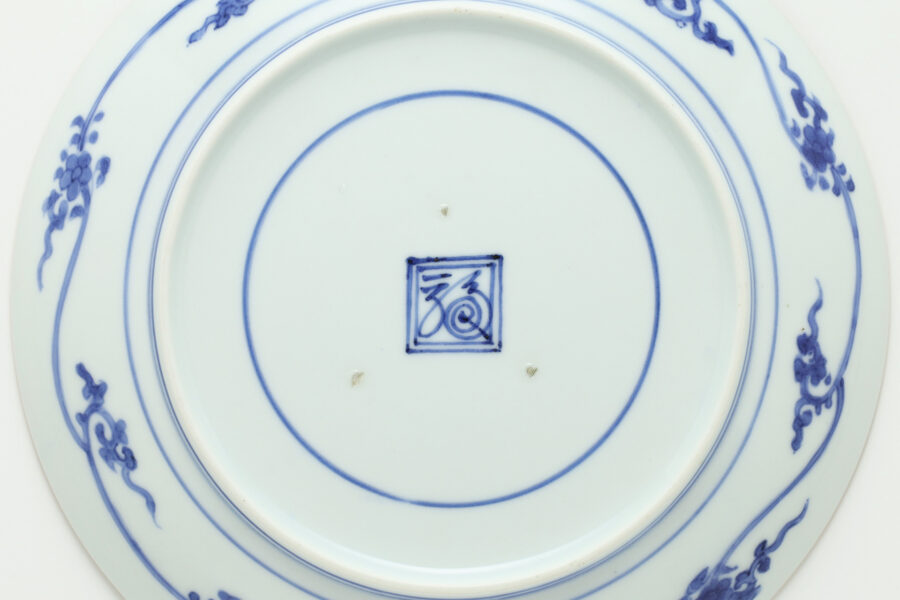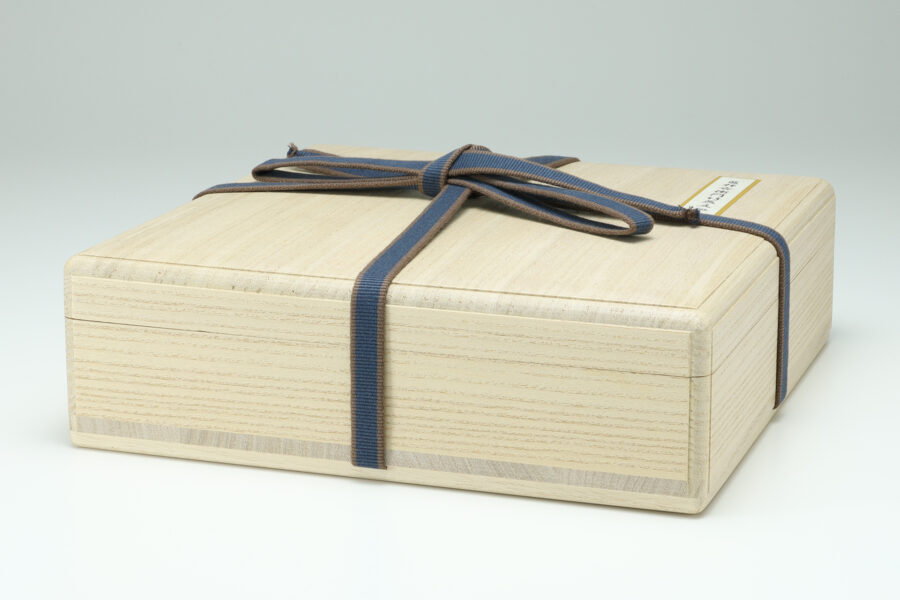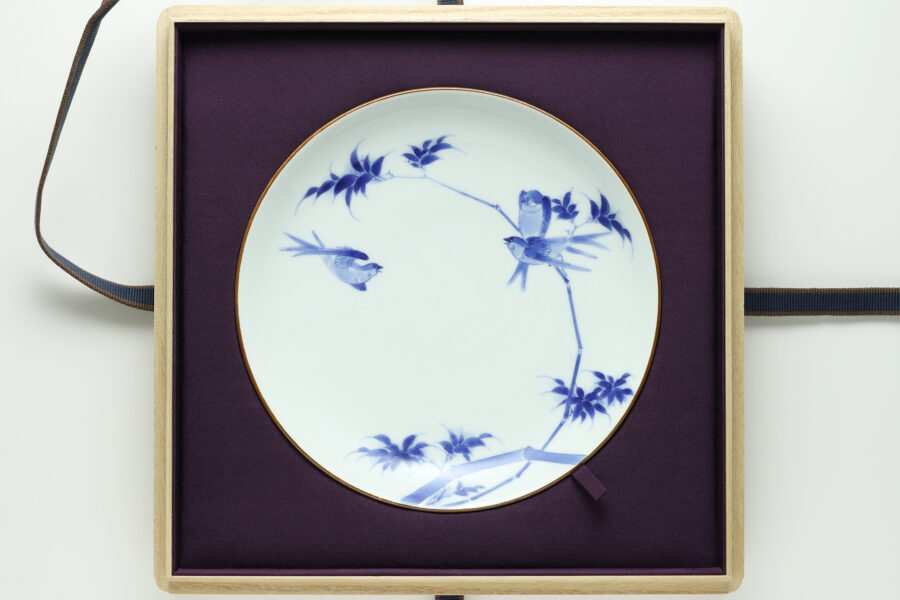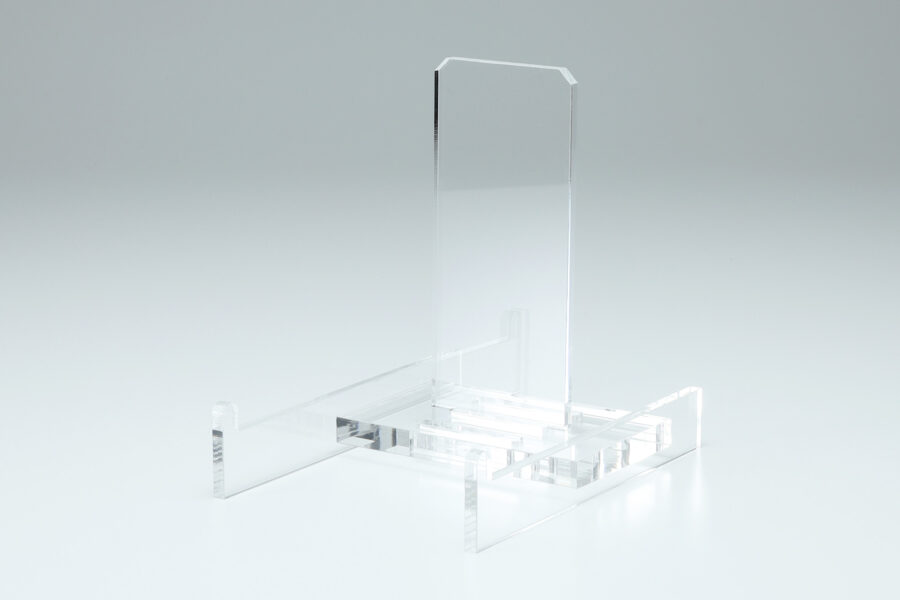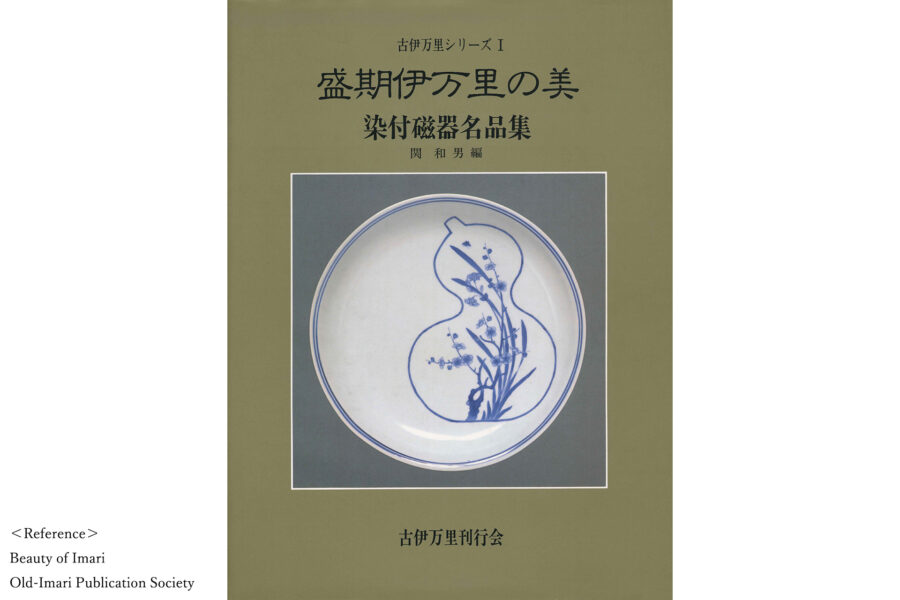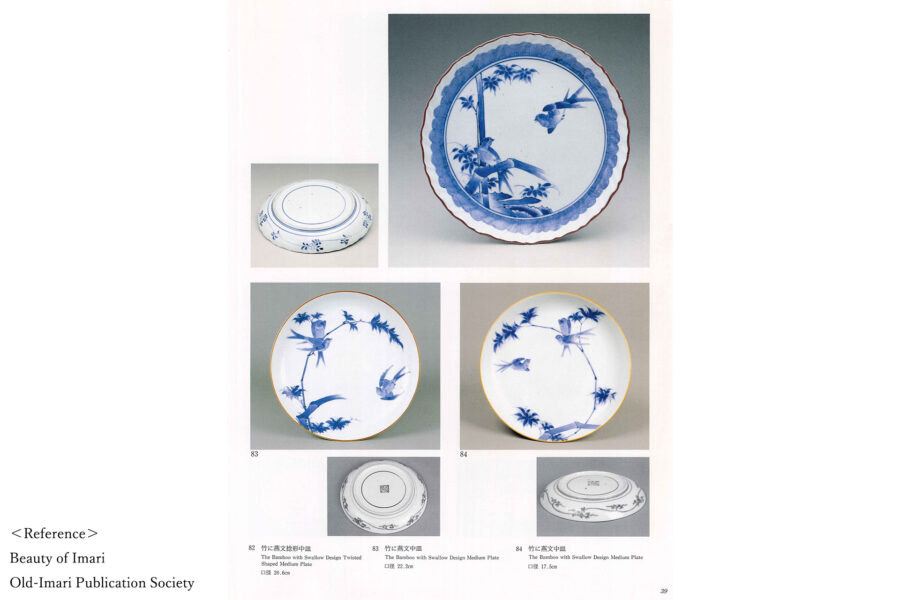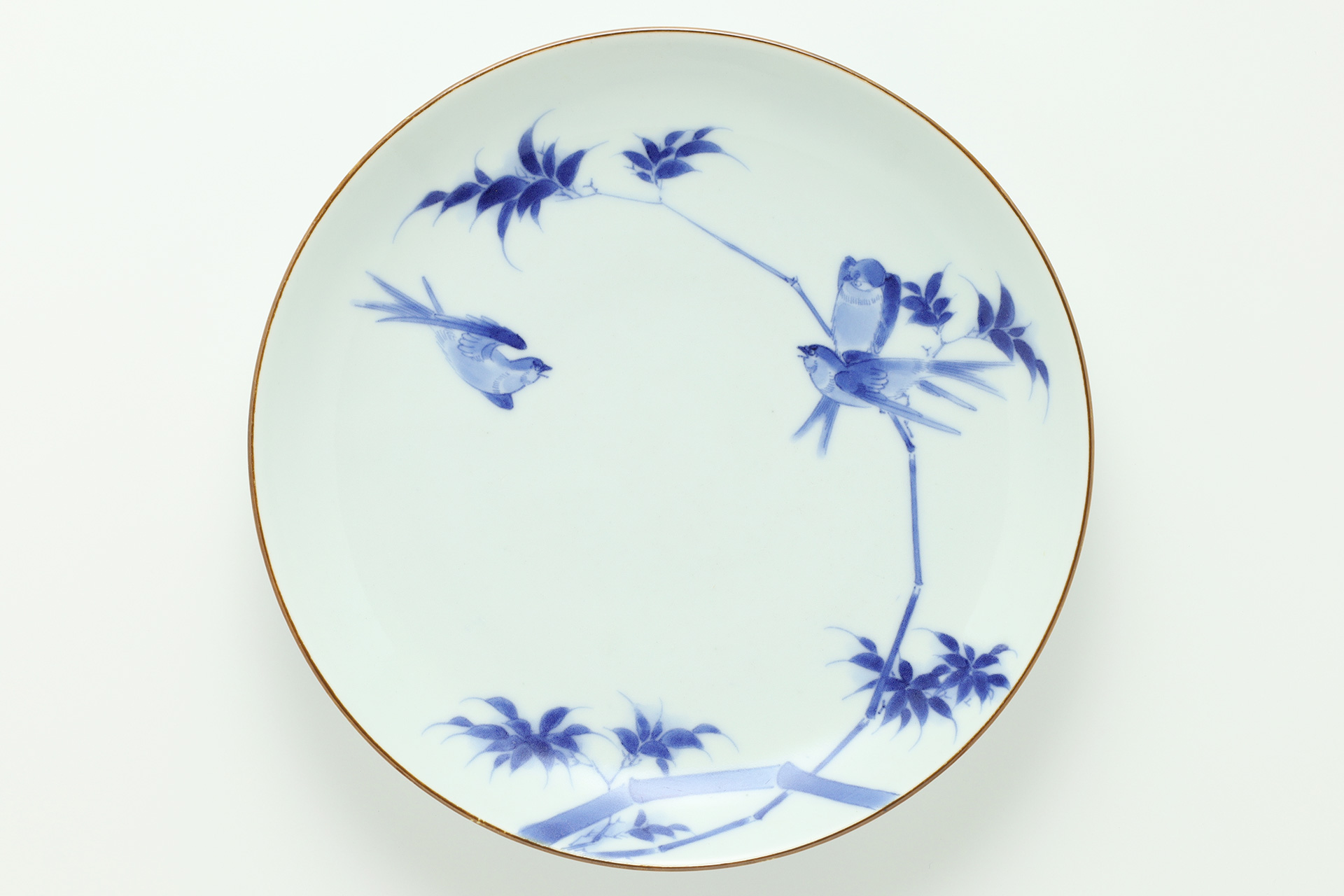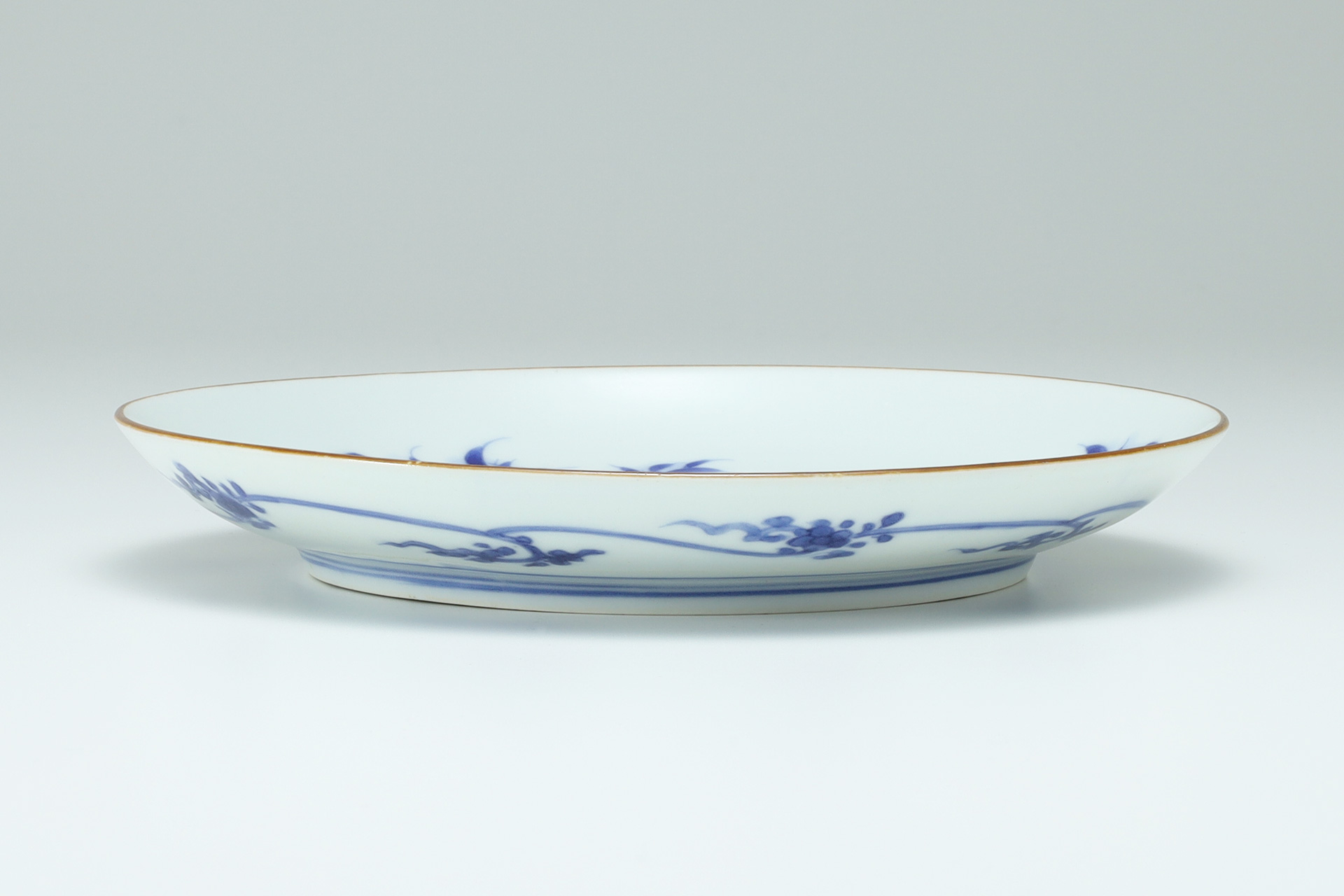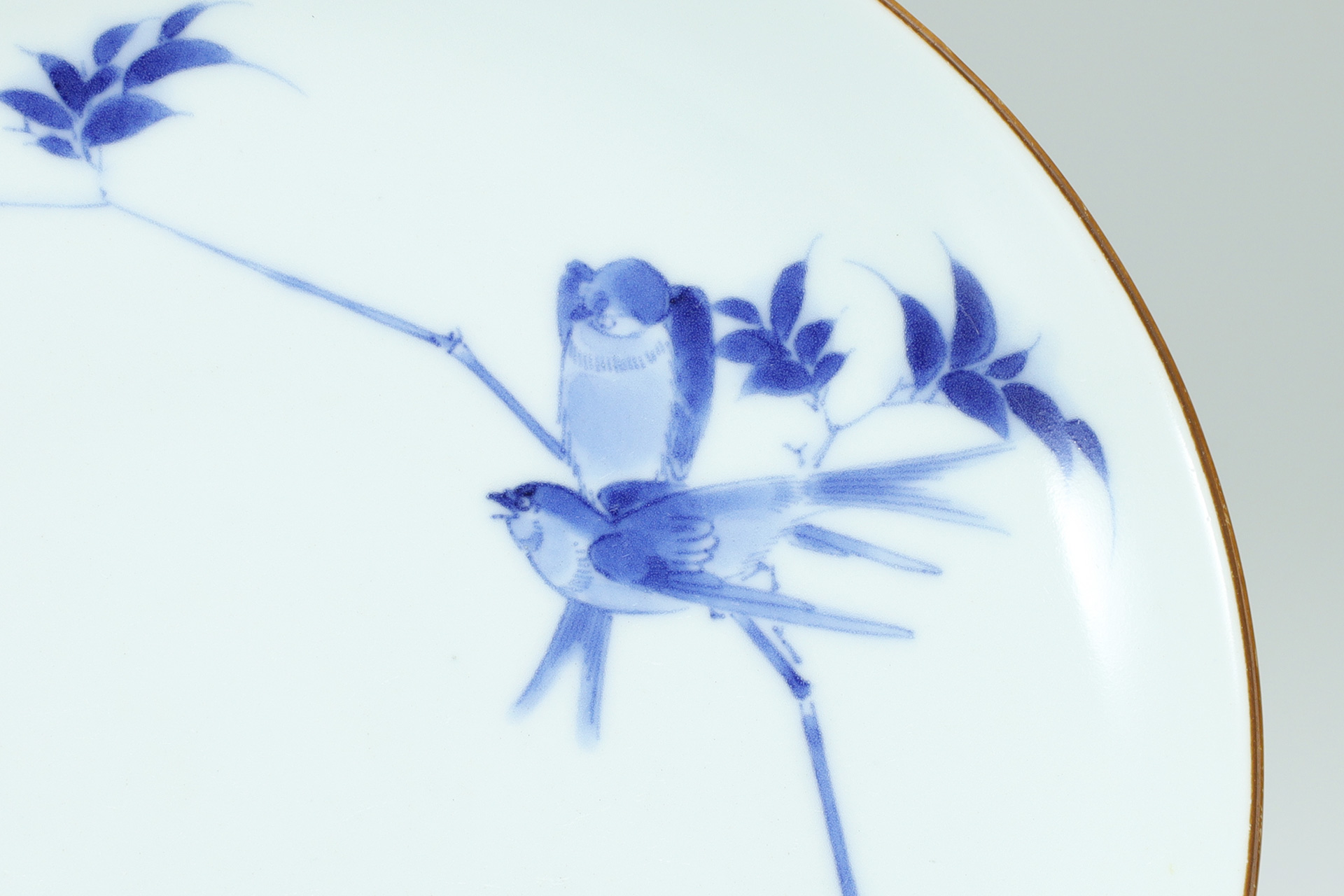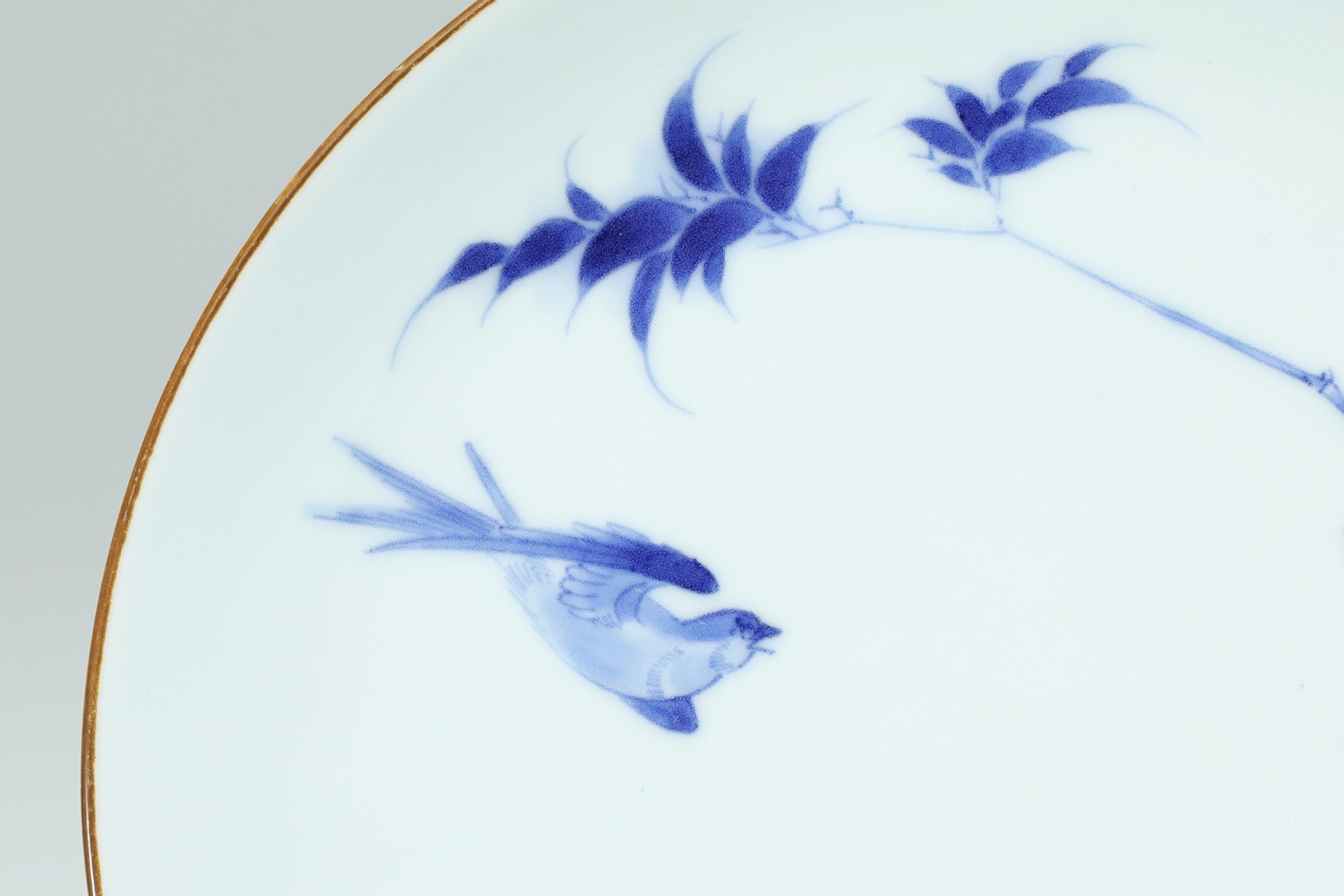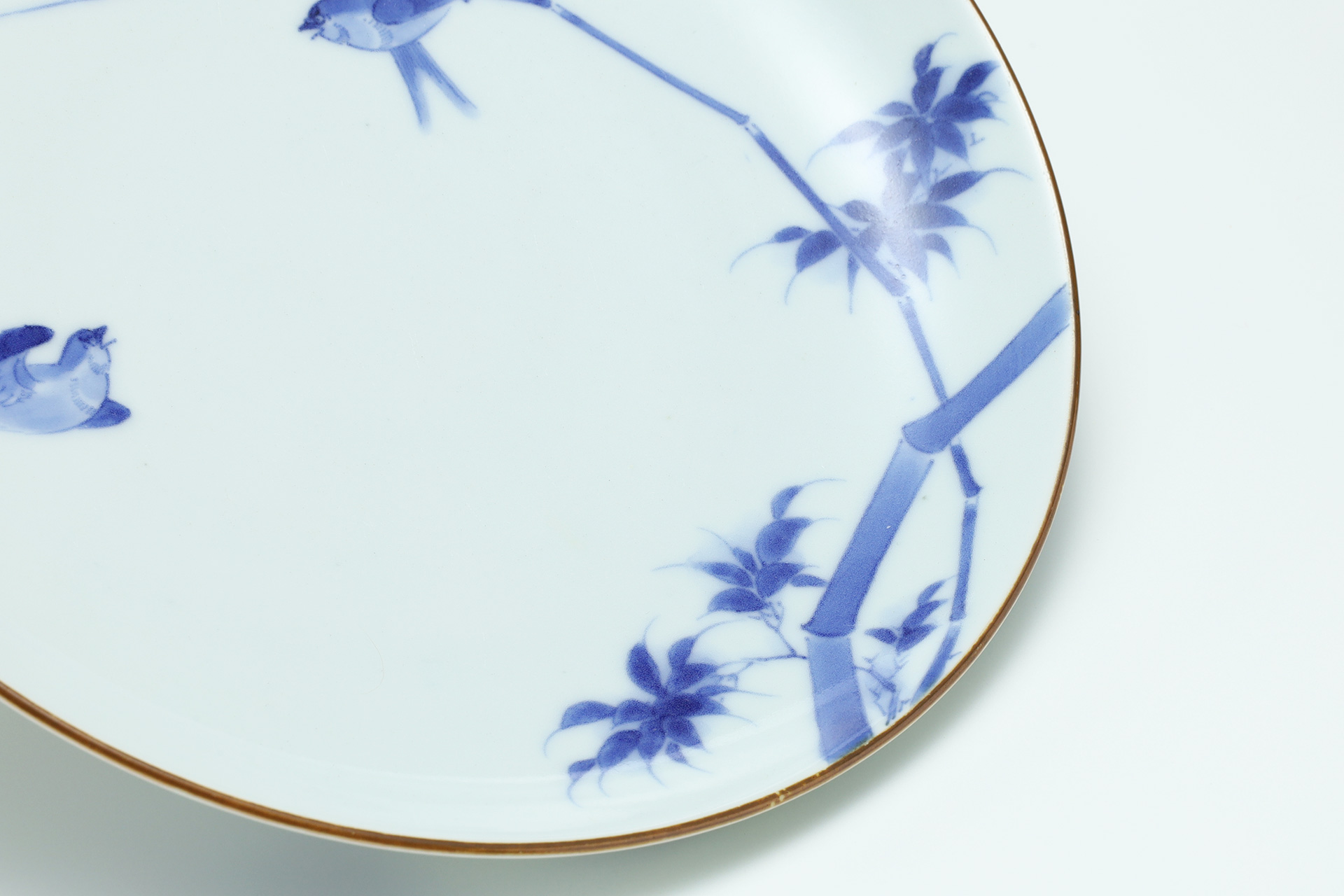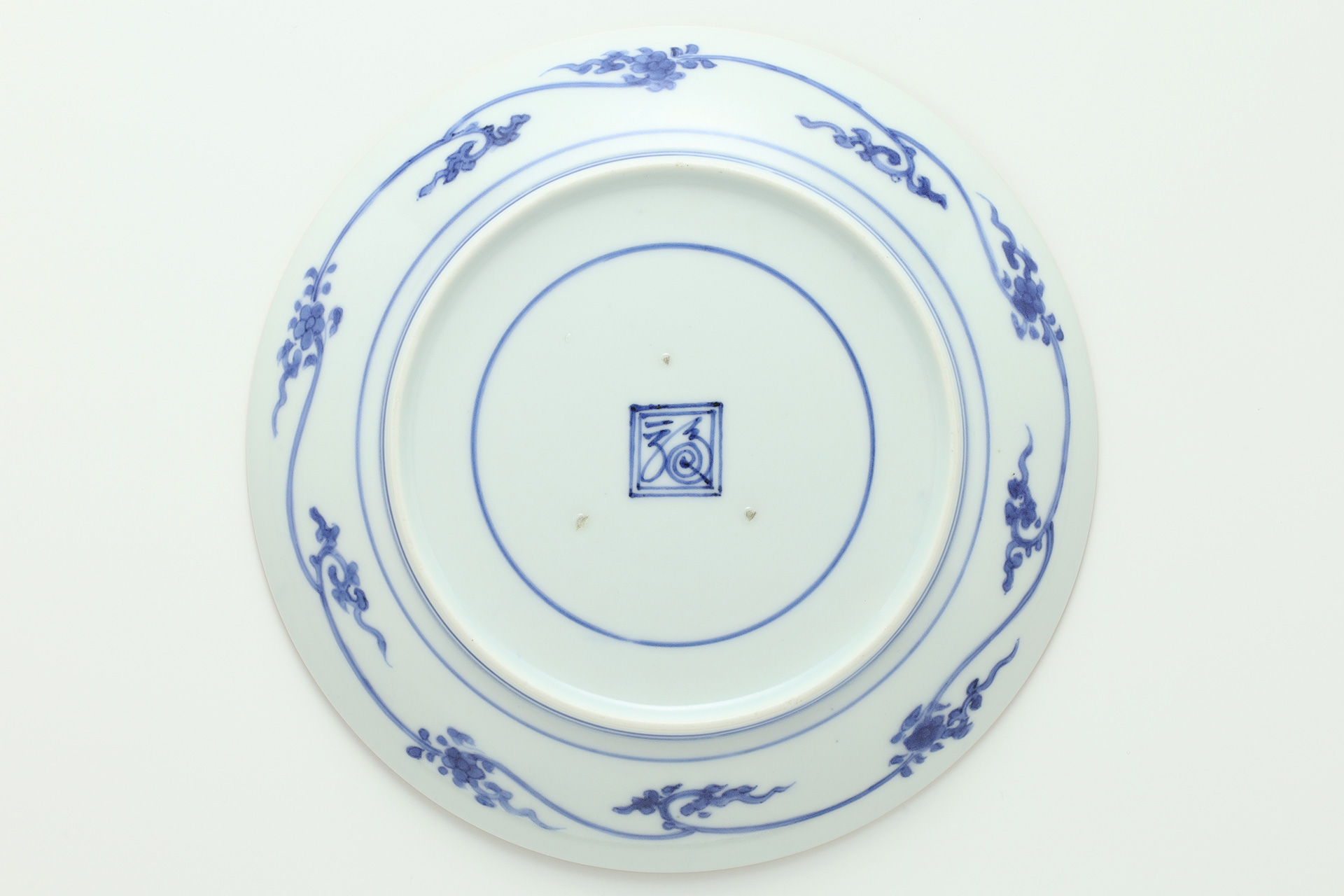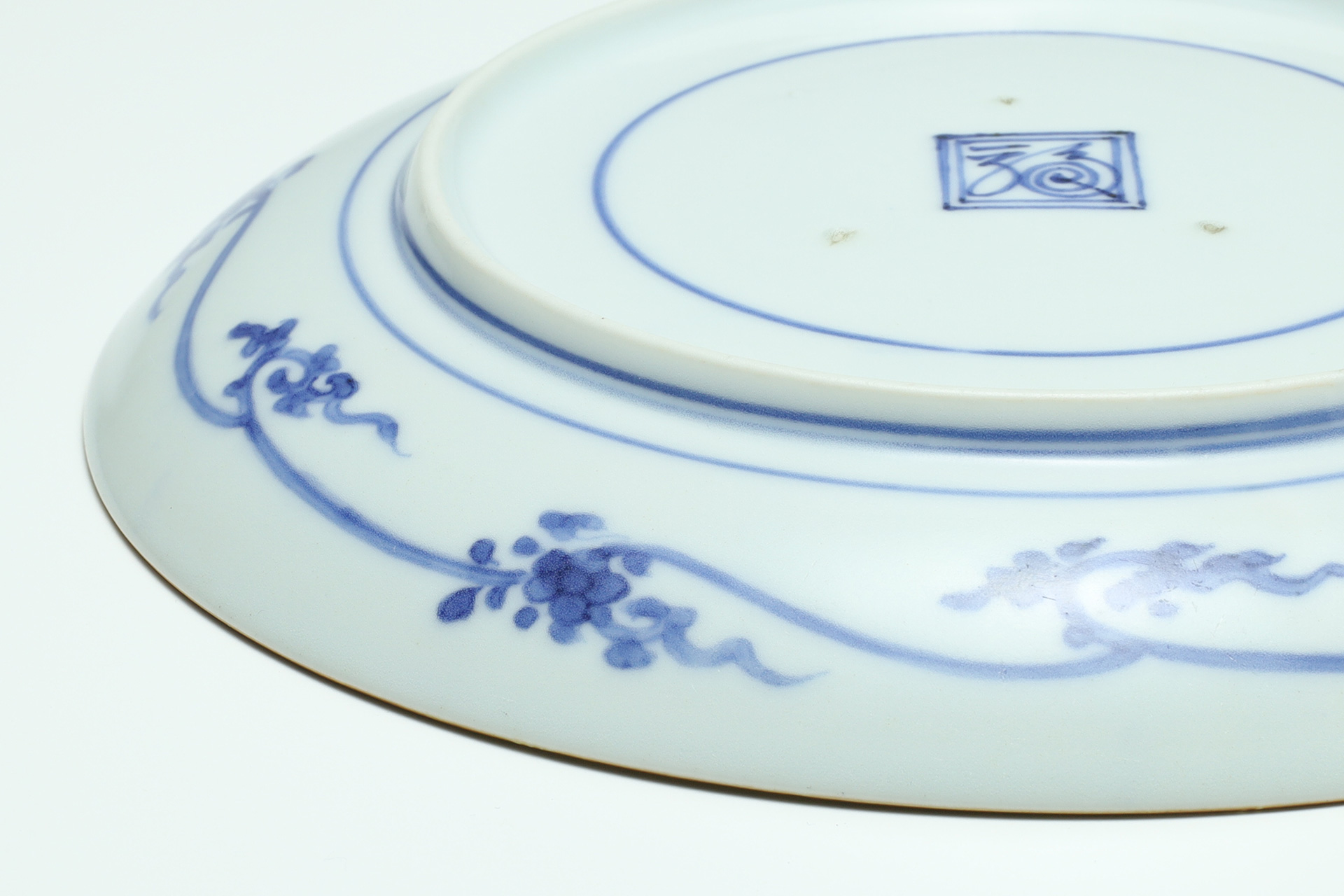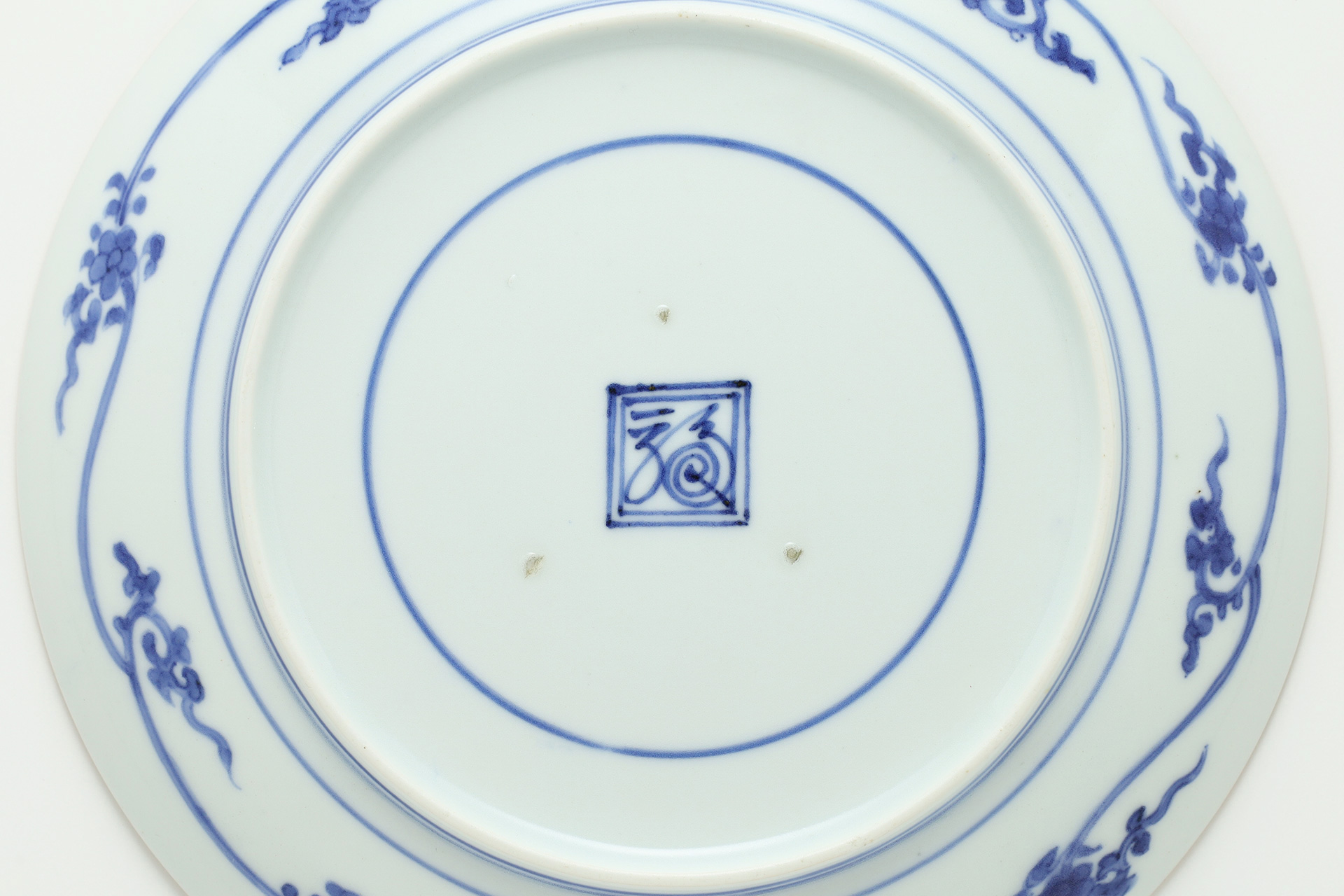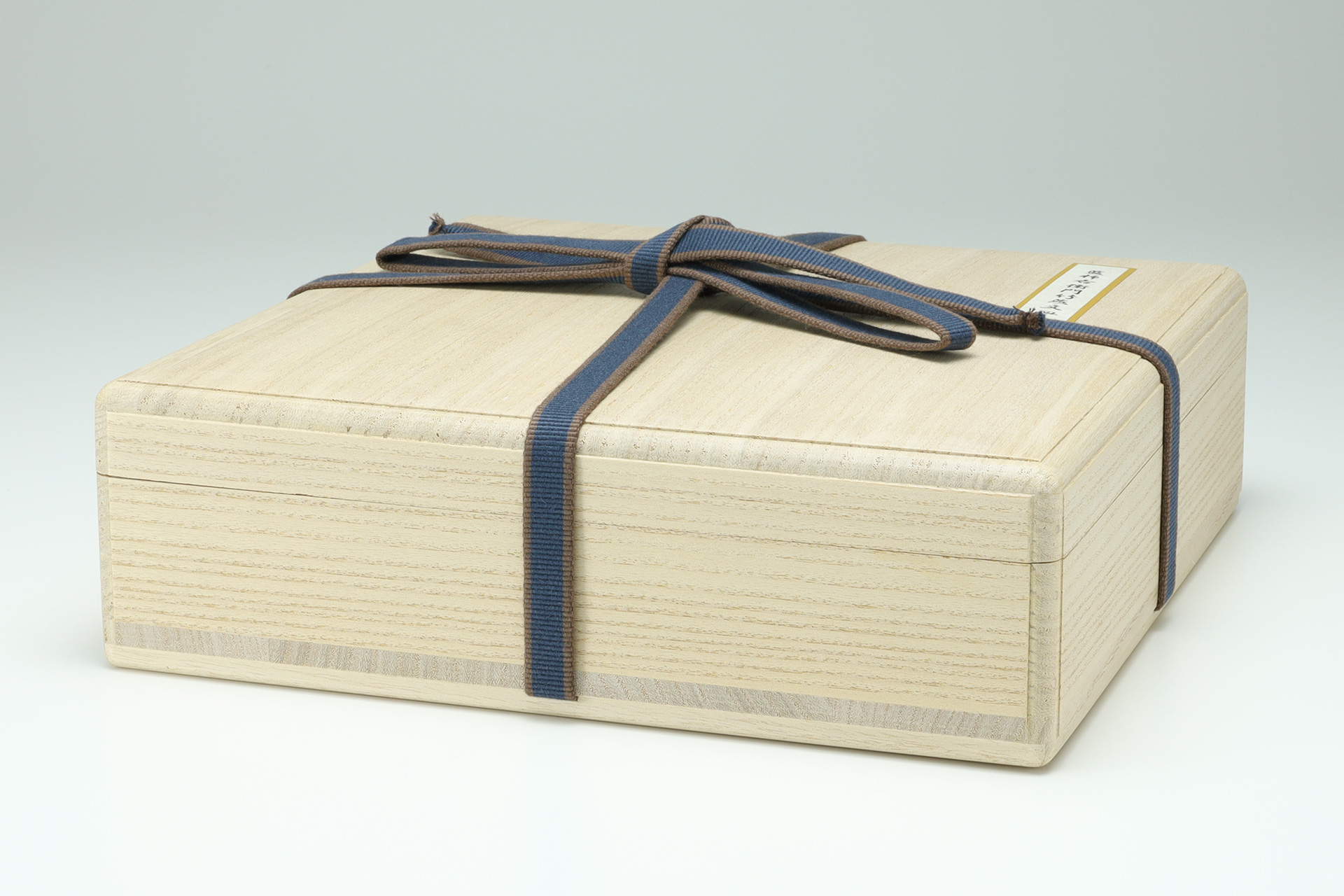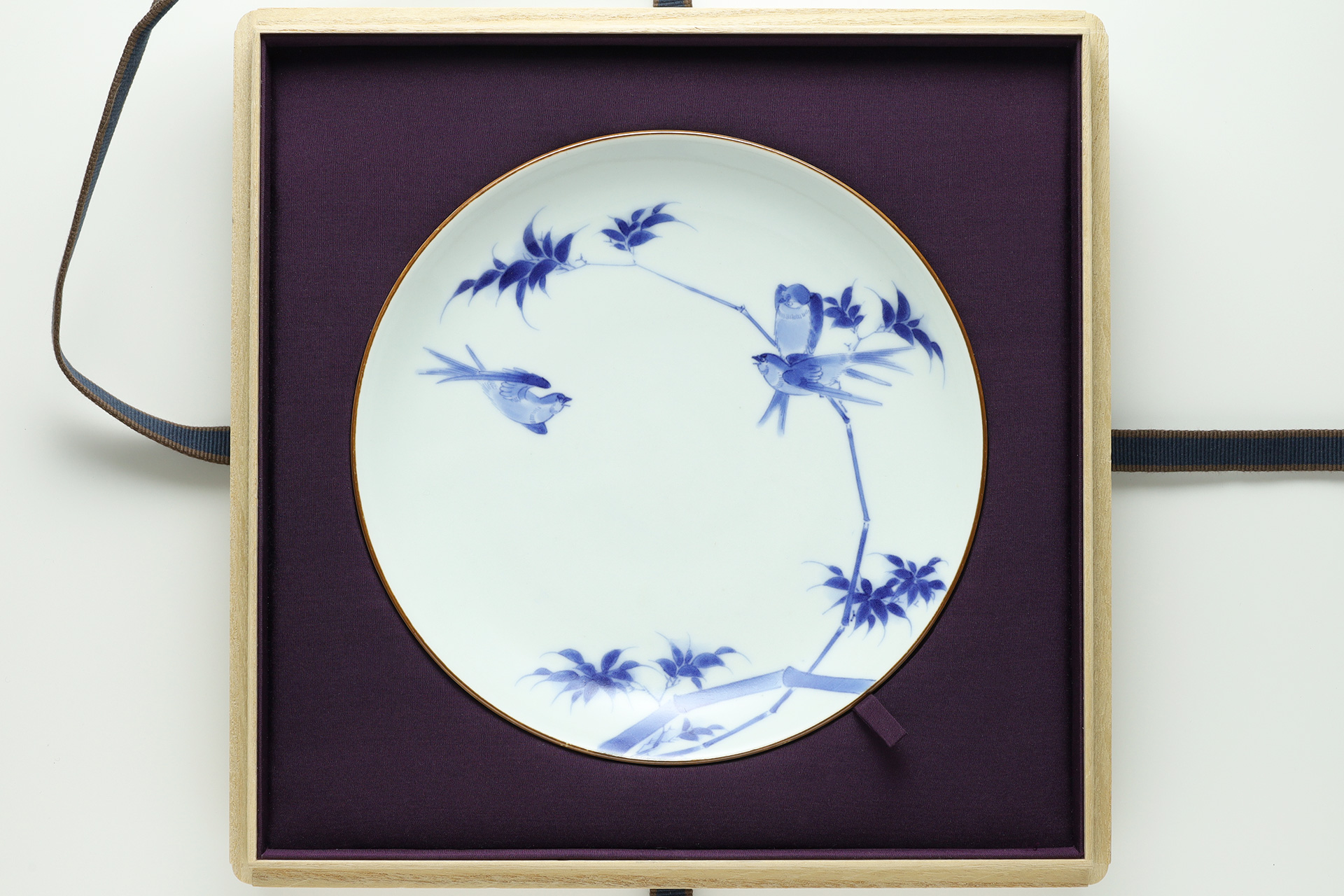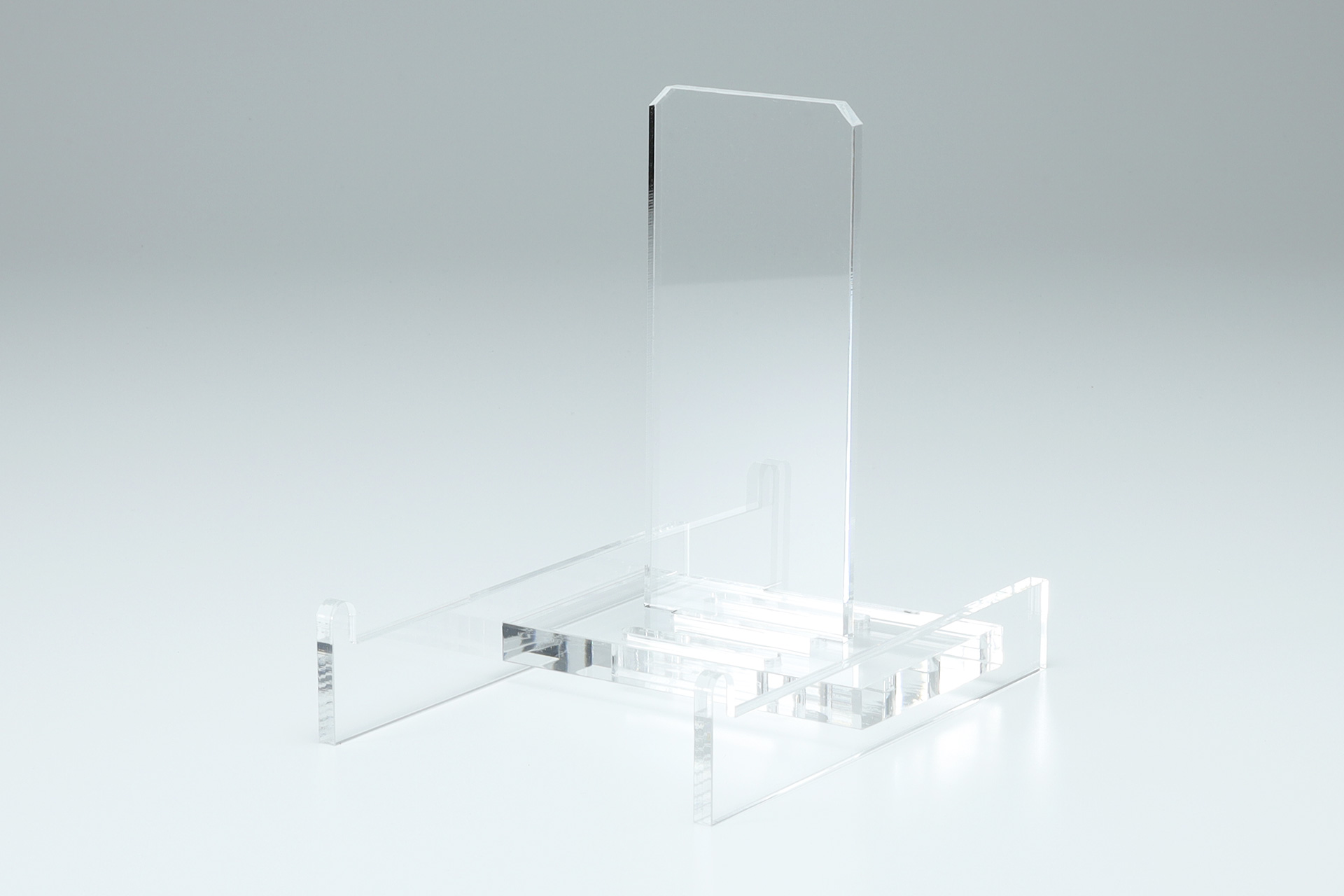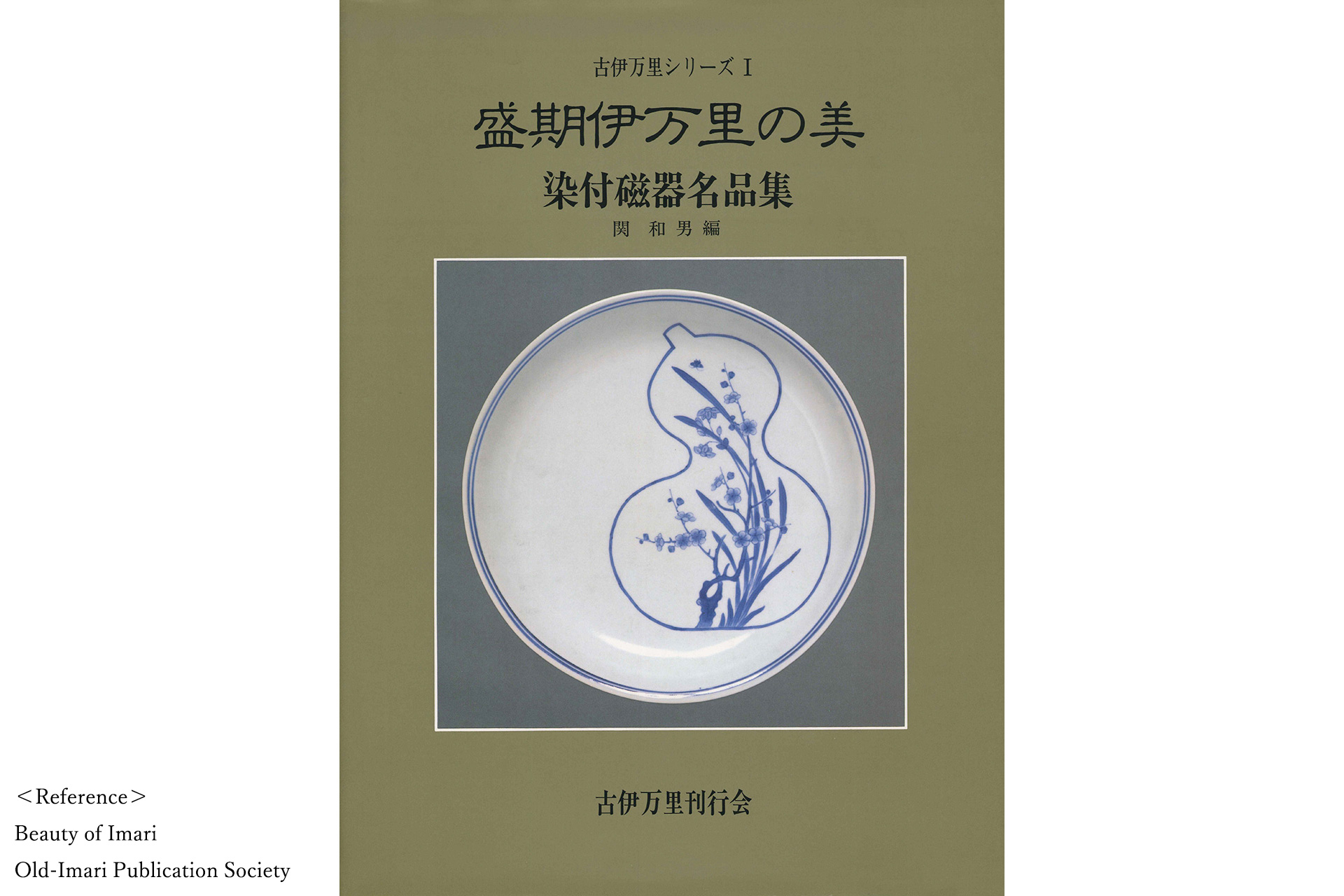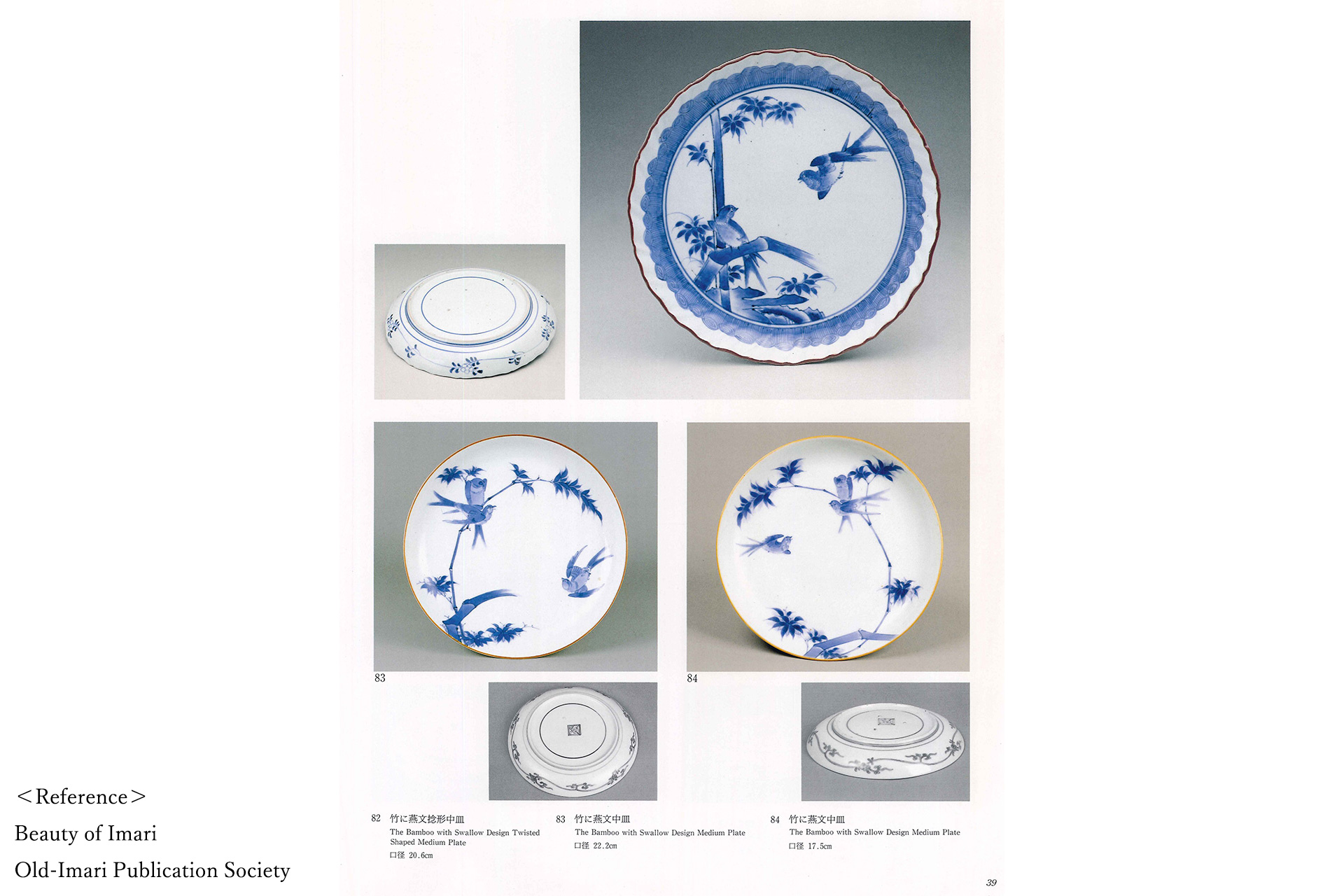This is the excellent work of the old-kakiemon, in which hizen porcelain technology has reached the extremes. Bamboo and swallow design is delicately drawn on the soft white color with undisturbed and precise brushstrokes, making it one of the few brands available. The iron glaze around the edge makes the dish look even more appealing, giving it an elegant and special atmosphere.
Inquiry
- Product Code
- 240112-2
- Period
- Edo Period
Late 17th century
- Weight
- 210g
- Diameter
- 18.0cm
- Height
- 2.7cm
- Bottom Diameter
- 11.6cm
- Description
- Paulownia Box(Harikomi Box)
Acrylic Dish Stand
- Condition
- Excellent Condition
It meets the requirements of the first class work with its sophisticated and rigorous modeling, beautiful blue and white, excellent condition.
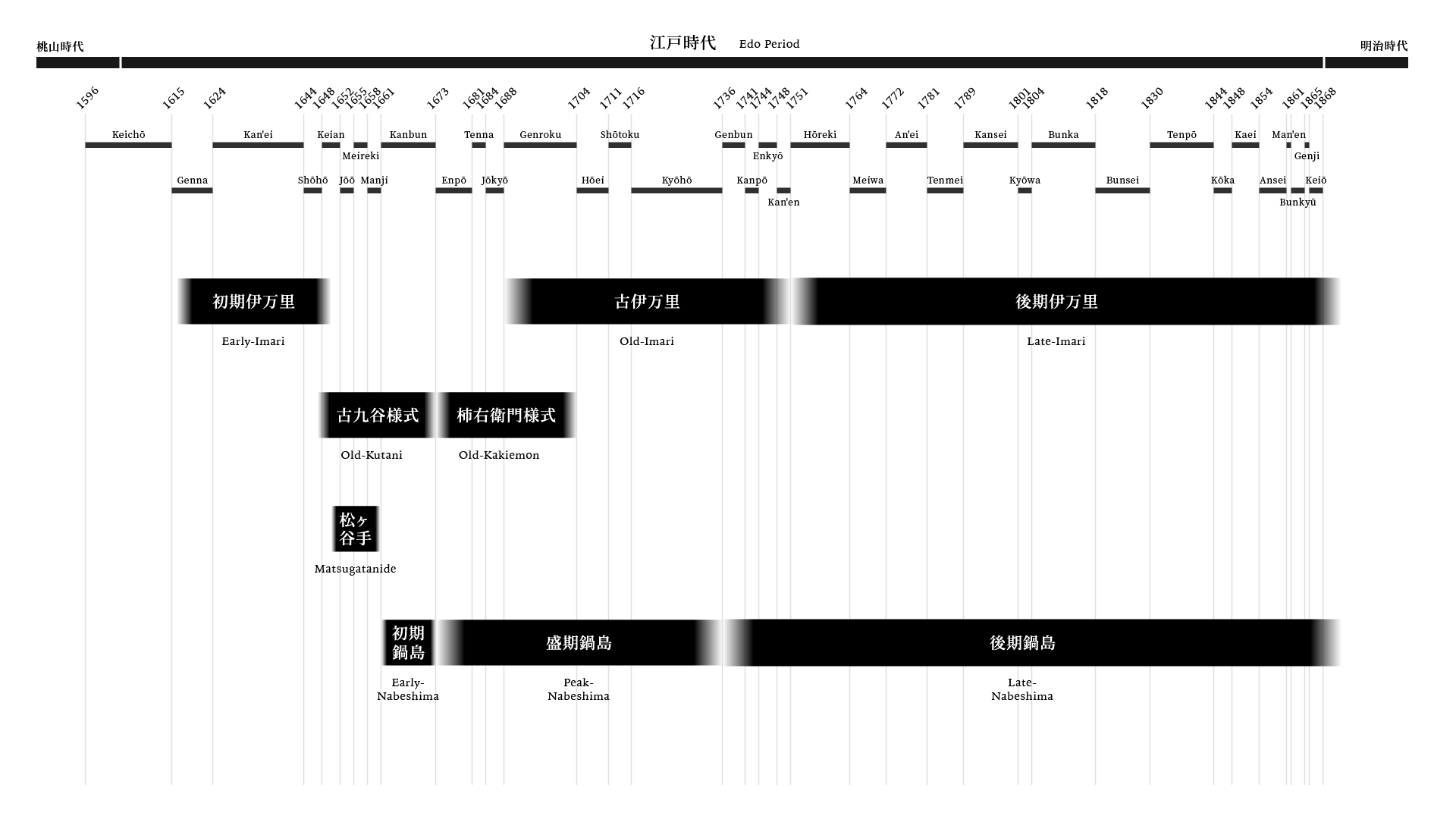
Hizen porcelain, including Kakiemon, reached its mature stage around the Enpo era(1673-1681). The composition makes use of the blank spaces and the delicate brush strokes make full use of the shades of blue and white, demonstrating a highly complete and sophisticated style.
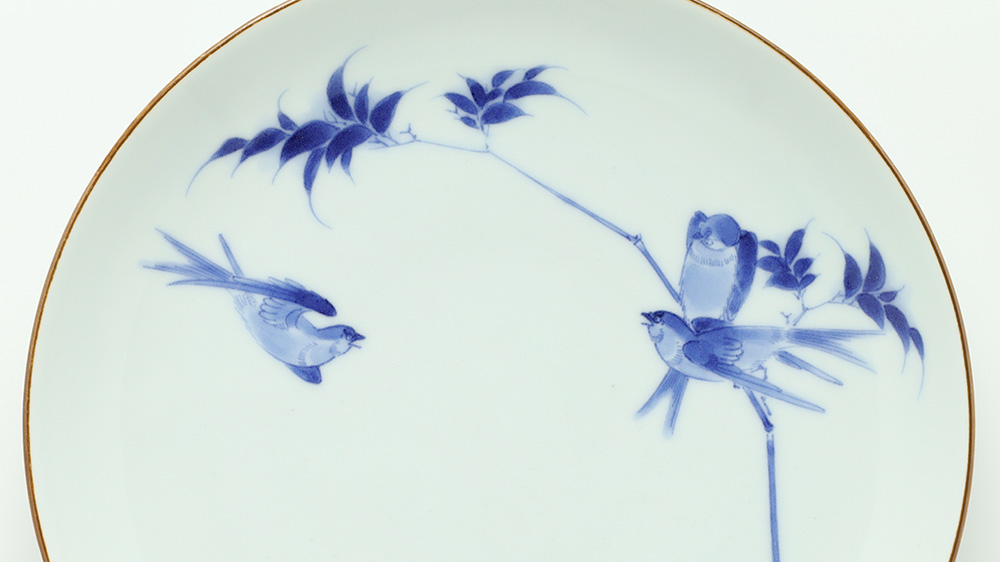
Swallows are migratory birds that cross the ocean from southeast asia to japan when the weather gets warmer in the spring. To protect themselves from predators such as crows and snakes, they build nests in places where people often come and go, such as under the eaves of houses. Summer is the time for swallows to raise their young, and as they raise their young in pairs, they have the meaning of having many children, safe childbirth, and good luck with marriage. Since ancient times, it has been said that the bird brings good fortune, and that “The house where the swallow nests will prosper”. It was loved by farmers as a beneficial bird that ate pests.
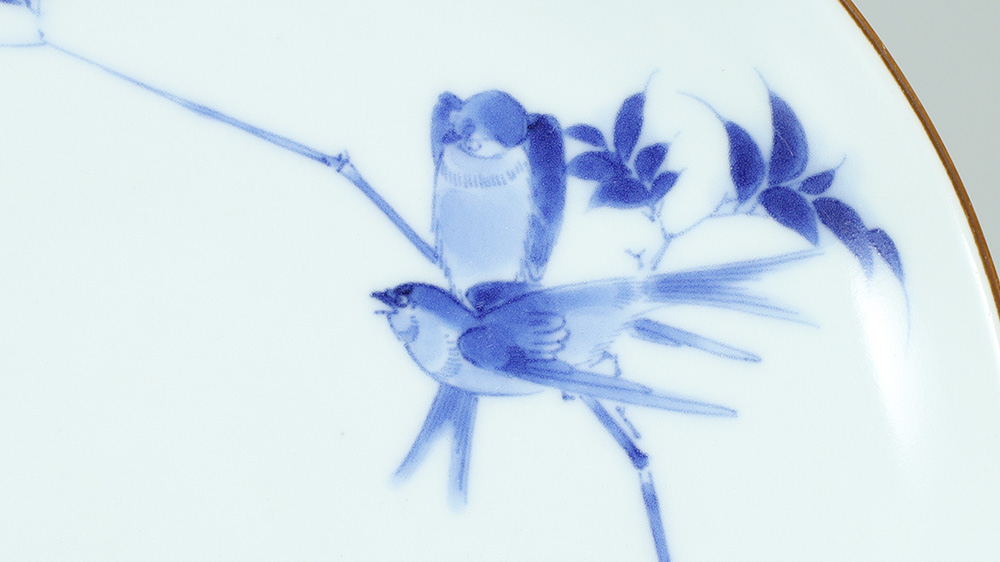
You can see 3 small meato at the bottom. Aiming for chinese porcelain, hizen porcelain became wider at the bottom of its dishes, and in order to prevent the bottom from sagging during firing, a technique was developed to attach a conical support called “Hari” made from the same material as porcelain. The smaller the meato, the better the work, which shows that this work is of high quality.
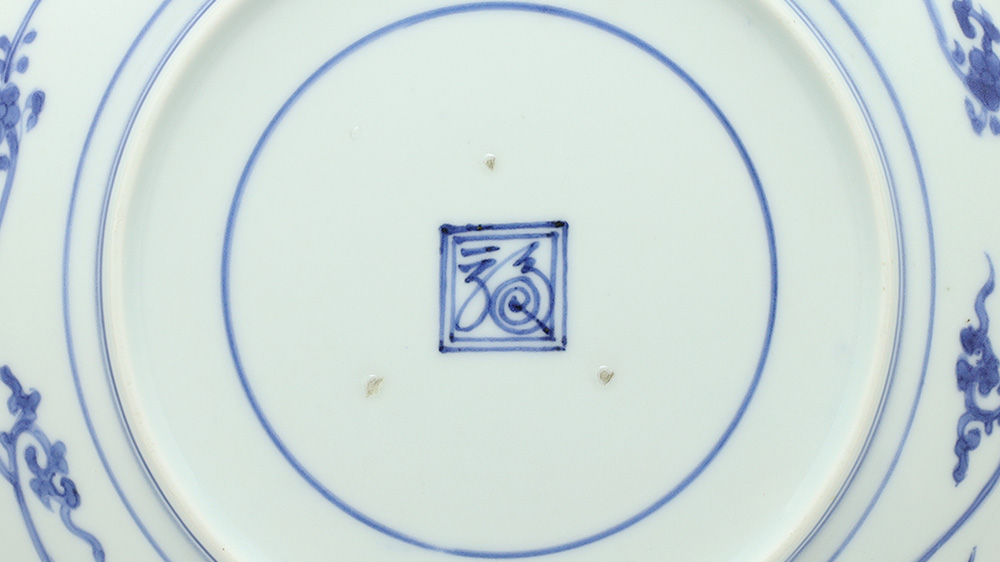
This is the highest quality wooden box(happo inro box)that we offer.
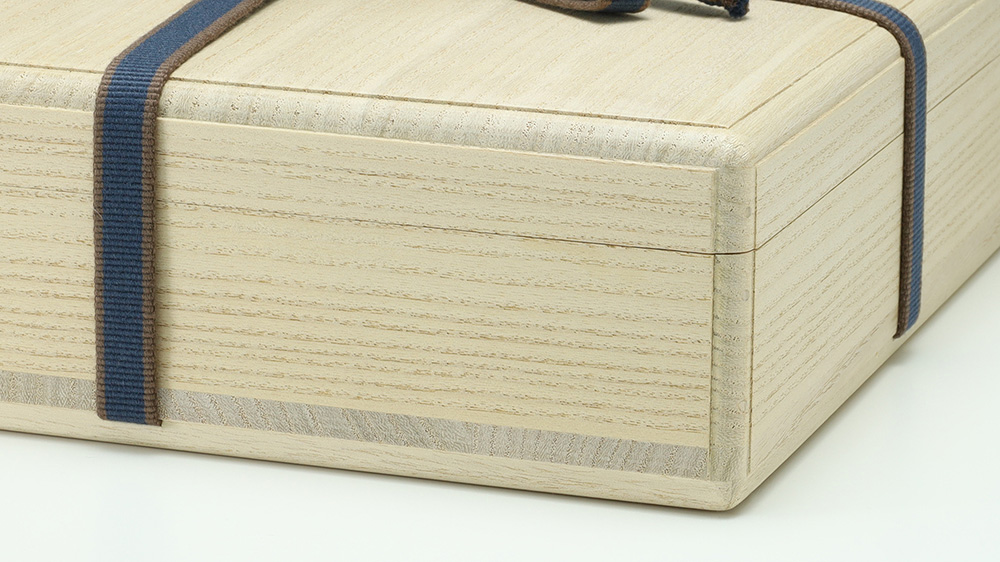
The interior is finished by a specialized upholsterer. It gives the box a neat appearance and makes it easier to place your work inside it.
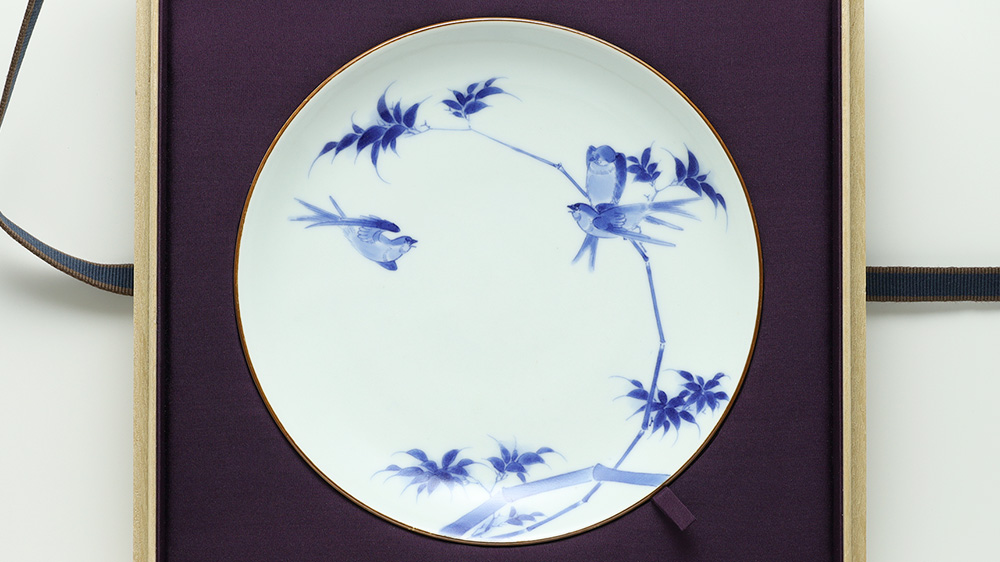
Old-Kakiemon
Old-kakiemon is a style of imari ware developed in arita, hizen(current saga prefecture), in the mainly during the Enpo era(1673-81). Today “Kakiemon” is defined not as exclusive works made by the kakiemon family alone but as a group of works ordered in significant quantities by the Dutch East India Company(VOC)and produced for export by several kilns in hizen arita. The elegant and graceful old-kakiemon, with its exquisite workmanship and delicate painting that makes full use of blank spaces, was especially popular among the porcelains exported in significant quantities by the VOC, and its high class work attracted european royalty and aristocrats. In addition, the warm and soft milky white base called “Nigoshide” accentuated the vividness of painted colors and greatly influenced later european porcelains such as meissen and chantilly. In the old-kakiemon, there are many works with inscriptions called “Uzufuku”. The name for this type of inscription comes from how the designed “Fuku” resembles a whirlpool. Inscriptions such as “Kin(Gold)”, “Inishiebito(Ancient People)” are often found on the finest, superior works. Although old-imari exported during the edo period displayed elegant beauty, the old-kakiemon works still catch people’s eyes and attract their interest even today.
https://tenpyodo.com/dictionary/old-kakiemon/
The Era Establishing the Export Industry Between the VOC and Japan
The east india companies were chartered companies established by european countries in the 17th century(the british in 1600, the dutch in 1602, and the french in 1604)for trade with the orient. The dutch east india company’s monogram, consisting of the initials “VOC”(Verenigde Oostindische Compagnie), was its emblem, was put on warehouses, coins, cannons, flags, ceramics, etc, to indicate the company’s ownership of products. In addition to spices, its original product of interest, the company also sought porcelain that could not be produced in europe and traded with china. The hard porcelain imported from china was called “White Gold” and was traded as a valuable item, rivaling gold in value. Once vast quantities of porcelain, a luxury item and symbol of wealth, were brought to europe, its beauty deeply impressed europeans, encouraging china to produce even more products. However, due to the civil war following the change between the ming and qing dynasties in the 1640s and policies restricting overseas trade, the quality of porcelain fired in the jingdezhen kiln and other porcelain kilns became inferior, making it almost impossible to buy porcelain products. As a result, the company sought japanese porcelain, which could be produced without interruption, as an alternative. In 1653, japan entered into an export deal with the dutch east india company(VOC)for imari ware. In 1659, japan received a massive order of about 56,700 pieces, ushering in a glamorous era for the export industry in japan. The new feudal system of the tokugawa government beginning to take shape, imari ware was thrust into the limelight of the international market as a product of the nabeshima clan of the saga domain. Because europe demanded identical replacements for chinese porcelain, many early pieces exported imitated the fuyode style and other styles from the late ming dynasty. The large volume of orders from the VOC led to significant technical advances at the hizen arita kilns, and the expanded capacity of these kilns made it possible to produce many jinko tsubo(agarwood jar). The exported porcelains varied widely in shape. Even considering this, it is clear that the expansion of trade with the VOC contributed to the significant flourishing of imari ware. When the qing dynasty lifted the qian-jie-ling(order blocking maritime traffic and trade)in 1684, exports of chinese porcelain resumed, and from around 1712, exports boomed. Chinese porcelain once again regained its dominant position in the market. As a result, imari ware lost out in market competition with chinese porcelain, which boasted quality, quantity, and low prices. China overwhelmingly outnumbered japan in the total number of porcelain exported through trade with the VOC. The establishment of meissen, the first porcelain kiln in europe, in 1710 contributed to the gradual decline of porcelain exports from asia. The official japanese porcelain trade ended in 1757 with a mere 300 pieces and then was left to private trade by the trading houses.
Events Related to the VOC
- 1602(Keicho7):Establishment of the dutch east india company(VOC).
- 1609(Keicho14):Establishment of the dutch trading post in hirado.
- 1641(Kanei18):Relocation of the dutch trading post to dejima, nagasaki.
- 1644(Kanei21):End of porcelain exports from china to the VOC, following a decline in porcelain exports beginning in about 1640.
- 1650(Keian3):Beginning of export of porcelain from japan as a replacement for chinese porcelain.
- 1651(Keian4):Beginning of exports to chinese merchants in addition to dutch merchants, where imari ware was acquired by the dutch and chinese alike.
- 1653(Shoo2):Signing of export agreement with VOC for imari ware, beginning their export. Records remain of these trades.
- 1659(Manji2):Beginning of full scale export of blue and white porcelains, including fuyoude, etc., after receiving a large order(approx. 56,700 pieces)of imari ware from the VOC.
- 1661(Kanbun1):Prohibition of chinese porcelain exports in the qing dynasty following the qian-jie-ling proclamation.
- 1684(Jokyo1):Resumption of exports of chinese porcelain after the lifting of the qian-jie-ling proclamation.
- 1710(Hoei7):Establishment of a porcelain factory in meissen, germany.
- The Shotoku era(1711-16):Tightening of restrictions on foreign trade, leading to a halving of the number of dutch and chinese ships arriving at dejima. Thus, porcelain exports also began to decline.
- 1725(Kyoho10):Stagnation of trade between japan and the VOC.
- 1757(Horeki7):End of official porcelain trade after only 300 pieces according to the VOC records, thereafter relegated to private trade by the trading houses.
- 1799(Kansei10):Dissolution of the VOC.



